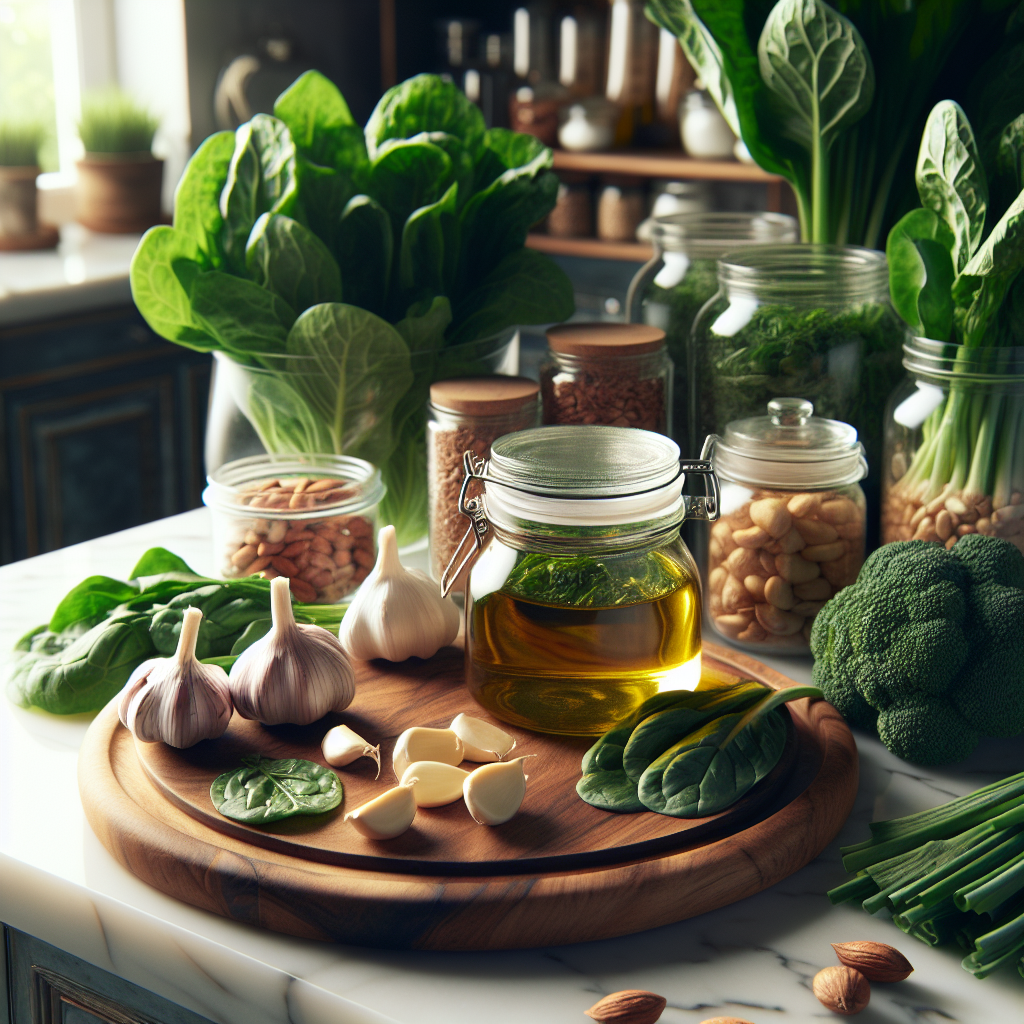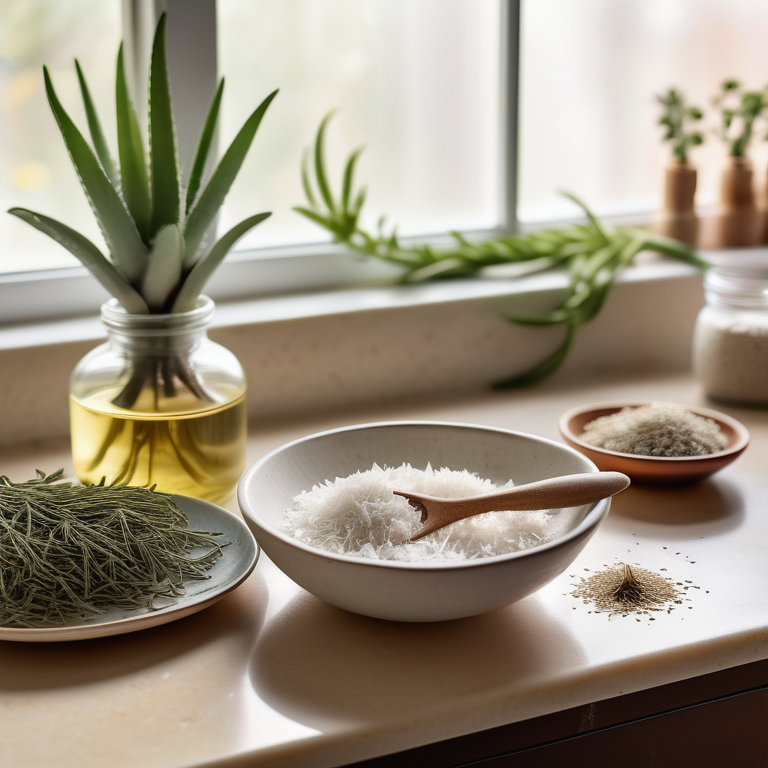What are the symptoms of candida overgrowth and how can you detox from it?
Symptoms of candida overgrowth include fatigue, bloating, and brain fog. To detox from candida, start by eliminating sugar and processed foods from your diet. Incorporate antifungal foods like garlic and coconut oil. Probiotics can also help restore balance to your gut flora, aiding in detoxification.
Key Highlights
- Learn how to identify and address Candida overgrowth naturally.
- Discover dietary and lifestyle changes to support your gut health.
- Explore the benefits of a Candida cleanse for overall well-being.
- Get a step-by-step guide to kickstart your detox journey today!
- Find out which foods to embrace and avoid for optimal results.
Introduction
You may be surprised to learn that our bodies normally have a type of yeast called Candida albicans. This yeast is mainly found in the mouth, skin, and gastrointestinal tract. A Candida cleanse is a method to help with Candida overgrowth. This happens when there is an imbalance in your body. Such an imbalance can impact your immune system and cause different health problems. Let’s explore more about Candida overgrowth!
Understanding Candida Overgrowth
Candida albicans is a common type of yeast that lives in the human body. In small amounts, it is harmless and can even be helpful. However, some things can upset the balance of germs in our bodies, causing the overgrowth of Candida.
When this happens, it can show up as problems like stomach issues or skin rashes. To deal with this common issue, it's important to understand how Candida works in our bodies and know the signs of its overgrowth.
The Role of Candida in the Body
Candida is normally found in our gut microbiome, which is the group of tiny living things in our digestive system. When our gut is balanced, Candida lives safely with other microorganisms. It helps us with digestion and absorbing nutrients.
But, some factors can upset this balance, causing Candida to grow too much. This condition is often called a yeast infection. Things like a weakened immune system, taking antibiotics, and eating a lot of sugar can all lead to this overgrowth.
To keep Candida under control, it is important to have a healthy diet, manage stress, and support your immune system.
Signs and Symptoms of Candida Overgrowth
Identifying candida overgrowth usually means noticing a group of symptoms of candida. Some common symptoms are constant tiredness, confusion, stomach problems, and repeated yeast infections.
Candida can affect the digestive system. This may lead to bloating, gas, constipation, or diarrhea. Skin issues like rashes, eczema, and fungal nail infections are also common signs.
If you think you have candida overgrowth, it is important to talk to a healthcare professional. They can provide a correct diagnosis and the right treatment.
Causes of Candida Overgrowth
Many things can lead to Candida overgrowth. A main reason is eating a lot of sugar and refined carbs. This type of diet creates an ideal place for Candida to grow.
There are other factors too. Taking antibiotics can upset the natural balance of bacteria in the gut. Hormonal imbalances can also play a role, along with a weakened immune system.
Diet and Lifestyle Factors
What we eat really affects our gut health. Foods that are high in sugar, processed foods, and too much alcohol can help Candida grow.
Instead, try to add whole foods to your meals. These include vegetables, fruits, and lean proteins. Making these dietary changes can help balance your gut microbiome and prevent Candida overgrowth.
Keep in mind that making slow and steady changes to your eating habits works better than extreme short-term diets.
Antibiotics and Candida
While antibiotic treatment is important for fighting bacterial infections, it can upset the balance of good bacteria in the gut. This may lead to an overgrowth of Candida. Antibiotics do not know the difference between good and bad bacteria. They often kill helpful bacteria that help keep Candida under control.
This change can give Candida a chance to multiply, causing an overgrowth. It's important to realize this side effect, especially if antibiotics are used for a long time or often.
To support your gut health during and after taking antibiotics, you can use probiotics and eat a balanced diet. This can help restore a healthy, weakened immune system and stop Candida overgrowth.
The Importance of a Candida Detox
A Candida detox is important for fixing the balance in your gut microbiome. It also helps improve your overall health. This process is more than just a diet because it targets why Candida overgrowth happens.
By cutting out some foods, adding helpful supplements, and changing your lifestyle, you can create a good space for healthy gut flora. This also helps lower the chance of future overgrowths.
Health Benefits of Reducing Candida
Reducing Candida overgrowth can help your health in many ways. When your gut microbiome gets back in balance, you might see improvements in digestion, energy levels, and even mood.
Many people also find they lose weight. This happens when they eat less sugar and fewer processed foods. A healthier gut lining helps with nutrient absorption, so you get more from the food you eat.
These benefits can go beyond just the physical. They can also improve your mental and emotional well-being.
How a Detox Supports Your Overall Wellness
A Candida detox helps your immune system. It also reduces swelling and supports your body's natural ways to detox. This process helps get rid of toxins made by Candida. As a result, you can feel better overall.
During this detox, you might have a Herxheimer reaction. This means you could feel worse for a short time while your body gets rid of toxins. It is a common part of detoxing and should go away in a few days.
If you have any health issues, talk to your doctor before you begin a Candida detox.
Preparing for Your Candida Detox
Preparing for your Candida cleanse means getting the right foods and knowing what to expect as you move forward. This process is a significant and transformative step towards achieving a healthier lifestyle and enhancing your overall well-being. Before you embark on this important journey, take the time to carefully collect everything you need for the cleanse.
Get ready mentally for the positive changes that are just around the corner, as this preparation will set the foundation for your success. It’s essential to cultivate a clear and focused mindset, being open to the transformations that will naturally occur throughout the process. Let’s work together to put together your comprehensive Candida cleanse toolbox, ensuring you have all the necessary tools, resources, and knowledge at your disposal to support you every step of the way!
Essential Items to Have
Starting a Candida cleanse diet needs a few important items to help you have a healthier gut. Think about adding these:
- Probiotics: Use a good quality probiotic supplement. It should have helpful bacteria like Lactobacillus and Bifidobacterium to restore your good gut bacteria.
- Antifungal Medications: Use natural antifungals like caprylic acid, oregano oil, and garlic. They can help fight Candida overgrowth. Talk to a healthcare professional for advice on how much to take and if it's right for you.
- Plenty of Water: Drinking enough water is important during any cleanse. Try to drink at least eight glasses of water each day. This will help get rid of toxins effectively.
Setting Realistic Goals and Expectations
Before you start your Candida detox, it’s important to set realistic goals and have reasonable expectations. Changes might not happen right away. This is about making lasting changes to your lifestyle.
You should be ready for possible detox symptoms. While your body gets rid of toxins, you may feel some mild discomfort like headaches, tiredness, or skin breakouts. These symptoms won’t last long and show that the detox is working.
If you have concerns or notice a severe negative reaction, talk to your doctor right away.
Step-by-Step Guide to Starting Your Candida Detox
Now that you know about Candida overgrowth, let's make starting your detox easier. It's time to get your gut healthy again!
Follow these steps to begin your Candida detox journey. Keep in mind that being consistent and patient will help you get the best results.
Step 1: Eliminating High-Sugar Foods
The first thing to do on a Candida diet is to cut down on sugar. You should stay away from sugary drinks, processed foods, and refined carbs.
Also, try to eat less starchy vegetables like potatoes and corn. These can help Candida grow too much. Instead, choose low-glycemic options such as leafy greens and cruciferous vegetables.
Take your time adding whole grains like quinoa, brown rice, and buckwheat to your meals. They give you lasting energy and fiber, which helps keep your gut healthy.
Step 2: Incorporating Anti-Inflammatory Foods
Along with removing foods that feed Candida, you should also add anti-inflammatory foods. These foods can help your gut health and lower inflammation.
Fill your plate with colorful fruits, vegetables, and healthy fats. You can find these fats in avocados, nuts, and olive oil. These whole foods give your body important nutrients, antioxidants, and fiber. They can really support your gut microbiome.
You might also want to try including gut-healing foods like bone broth, fermented vegetables, and coconut oil into your diet.
Step 3: Staying Hydrated and Managing Detox Symptoms
Staying hydrated is very important during your Candida cleanse. Drinking lots of water helps wash away toxins that come out during the detox pathways. This can lessen the symptoms of the Herxheimer reaction.
Herbal teas, like ginger and peppermint, can make your stomach feel better and help reduce bloating. Try to drink at least eight glasses of water every day.
Pay attention to your body and rest if you need to. Light exercise, such as walking, can also help with detox and increase your energy.
Step 4: Introducing Probiotics and Antifungals
A key step in dealing with candida overgrowth is adding good bacteria back into your gut. Probiotics can help by bringing live cultures that restore balance and fight off harmful yeast cells.
You might also think about using antifungal medicines to target the overgrowth more. Natural antifungals like garlic, oregano oil, and caprylic acid can stop Candida from growing.
Talk to a healthcare professional to find out the right dosage and how long you should take them based on your needs.
Foods to Embrace and Avoid During Your Detox
Making smart food choices is very important for improving gut health during your Candida cleanse. You should think about adding foods full of nutrients that help your body heal naturally.
Let’s look at the foods that can help or hurt your Candida detox. Understanding which foods to eat and which to skip can make a big difference in how well your detox works.
Key Foods to Include in Your Diet
Embrace nutritious foods that help your body and prevent Candida overgrowth. Try to include plenty of non-starchy vegetables like broccoli, spinach, and asparagus in your meals.
It is important to choose whole foods instead of processed foods. Pick lean protein options such as fish, chicken, and legumes. Healthy fats from avocados, olive oil, and nuts are good for you too.
Also, adding dietary fiber from chia seeds, flaxseeds, and psyllium husk can help keep your digestion good and support a healthy gut.
Foods and Substances to Avoid
During your Candida cleanse, it's best to avoid foods and substances that exacerbate Candida overgrowth or hinder the detox process.
Steering clear of refined sugar, white flour products, and processed foods is crucial. These foods disrupt the delicate balance of gut bacteria, feeding the Candida yeast.
In addition to the foods listed below, it's essential to minimize your intake of alcohol and caffeine.
|
Foods and Substances to Avoid |
|
|
Sugar |
Table sugar, honey, maple syrup, agave |
|
Refined Grains |
White bread, pasta, pastries, white rice |
|
Fruit |
High-sugar fruits like bananas, grapes, mangoes (limit low-sugar fruits like berries) |
|
Dairy |
Milk, cheese (except for some fermented dairy like unsweetened yogurt and kefir) |
|
Processed Foods |
Packaged snacks, fast food, processed meats |
|
Fermented Products (in excess) |
While generally beneficial, limit consumption to small amounts during the initial detox phase |
Monitoring Your Progress and Adjusting Your Plan
As you go through your Candida cleanse, it is important to watch how your body reacts and change your plan if needed. Notice how you feel, both in your body and your mind.
Keep in mind that everyone reacts differently to detox methods. By paying attention to your body and making changes when needed, you can customize your Candida cleanse for the best results.
Tracking Symptoms and Improvements
As you go through your candida cleanse, pay attention to any changes in your symptoms of candida. You may find that you feel less tired, have fewer stomach problems, or notice less skin irritation.
Look out for any health benefits too, like feeling more energetic, digesting food better, or sleeping more soundly. These good changes show that your body is adjusting well to the detox.
You might also see some weight loss because you are lowering your sugar cravings and eating healthier.
When to Consider Professional Guidance
Many people can feel better from Candida overgrowth by changing their diet and lifestyle. However, it’s important to get professional guidance for serious cases.
Trusted sources, like the Mayo Clinic, recommend that you talk to a healthcare professional for a proper diagnosis and treatment. A blood test or stool test may be suggested to check for Candida overgrowth.
Your doctor or a registered dietitian can create a personal plan just for you. This plan can help deal with the causes and ease your symptoms effectively.
Conclusion
In conclusion, starting a Candida detox can greatly improve your health. By knowing how Candida overgrowth affects you, spotting the signs, and making important changes to your diet and habits, you can help your body. Don't forget to drink enough water, keep track of how you're doing, and seek help from a professional if you need it. Focus on eating anti-inflammatory foods, taking probiotics, and using antifungal options while staying away from sugary foods. Make self-care a priority and set realistic goals for a successful detox. Your well-being is important!
Frequently Asked Questions
What Are the Signs That Candida Is Leaving Your Body?
As your body fights off Candida albicans, you might feel some die-off symptoms. These can include tiredness, headaches, or changes in digestion. People often confuse these symptoms with problems like Lyme disease. However, these are just temporary side effects showing that the yeast overgrowth is being tackled effectively.



